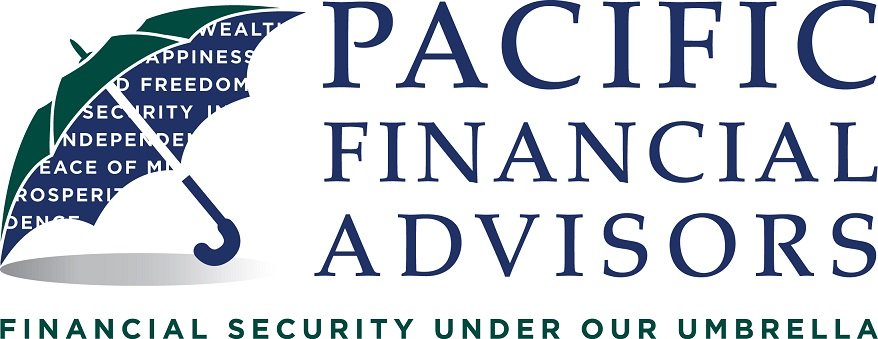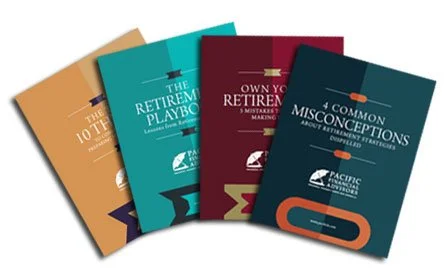Education
Our retirement classes are designed to help you stay on top of your retirement goals. The rules for a retiring generation of baby boomers have changed. In these courses we talk about how these changes will impact you as you strive for a prosperous retirement.
Discover how to:
Evaluate the impact of the latest tax law changes on your retirement
Determine if you have enough money for retirement
Use the 3 basic types of retirement accounts to maximize cash flow in retirement
Evaluate the benefits of a Roth Conversion
Maximize Social Security income
Reduce or eliminate unwanted expenses or delays with estate planning
Understand if your portfolio is truly “diversified”
Avoid the three basic “pitfalls” of retirement distribution planning
-
You will find this course relevant if you are developing a retirement plan, nearing retirement, or recently retired. Regardless of your stage in the process, you’ll learn updated strategies that will help you build and preserve wealth in volatile times. Above all, this course is designed to help you assess your current financial position, then lay out a personalized roadmap that helps you achieve your retirement goals.
-
Many of the retirement strategies utilized by your parents have grown outdated and may no longer have application to those looking to retire today. This class compares and contrasts the old retirement paradigms of yesteryear and the new paradigms of today as you prepare to retire in the 21st century. You’ll learn about the effects of Social Security taxation as well as the common distribution pitfalls in retirement. Perhaps most importantly, this class will teach you how to develop a personalized strategy as you confront the challenges of retiring in a rapidly changing world.
-
There’s a difference between taking your financial cues from media outlets and learning the basics of retirement planning from a trusted, reliable, unbiased source. This course is designed to give you an exhaustive and comprehensive view of financial education while uncovering the many new pitfalls that threaten to derail many retirees in the 21st century.
-
How is retirement planning in the 21st century different than that of your parents?
Chances are, your retirement looks and feels vastly different than the generation before you. As a result, your approach to the retirement planning process must change. This course begins by exploring an updated approach to retirement planning that accounts for all of the challenges and pitfalls that are unique to the rapidly changing world in which we now live. -
There is a lot of static in the media and on the internet about how to best save for retirement.
In this section you’ll learn about the three basic types of investment accounts and how to use them to maximize cash flow in retirement. Should you contribute to an IRA or a Roth IRA? How about Roth Conversions? This section teaches you how to position your savings so as to minimize taxes and maximize cash flow in retirement.
-
Estate planning involves more than just reducing your taxes. It’s also about making sure your assets are distributed as you wish – both now and after you’re gone.
In this section, we’ll discuss strategies and techniques to reduce or eliminate estate taxes, delays, and legal challenges following your death. You’ll also learn how to build an estate plan that addresses your wishes should you have an incapacity due to an illness or injury. Finally, we’ll investigate the benefits of using a trust versus a will when determining how to best transfer your assets upon death. -
Some pre-retirees are not aware that their Social Security can be taxed.
In this section you’ll learn about the impact of Social Security taxation on your retirement. We’ll also look at the IRS thresholds that cause Social Security taxation. Finally we’ll discuss strategies you can implement that can put you in a position to receive your Social Security free from tax. -
The investment strategies that got you to this point may not necessarily be the ones that see you safely through retirement.
This section discusses the two types of investment risk in every investment portfolio and how to mitigate them. It also helps you lay out a strategy to increase the likelihood that you won’t outlive your retirement assets.
-
How much money can you safely take out of your retirement accounts without risking running out of money?
Does the order in which you withdraw your various assets in retirement matter? What happens if you experience market loss while taking distributions? This section discusses all of these retirement pitfalls and outlines strategies and solutions designed to create more certainty and predictability in your retirement plan.
-
In this section we’ll cover the Medicaid rules that govern asset spend-down in the event you should need long-term care.
Then we’ll cover the four most common strategies used to mitigate long-term care risk. Finally we’ll help you assess which long-term care planning strategy is best suited to your particular situation.


















